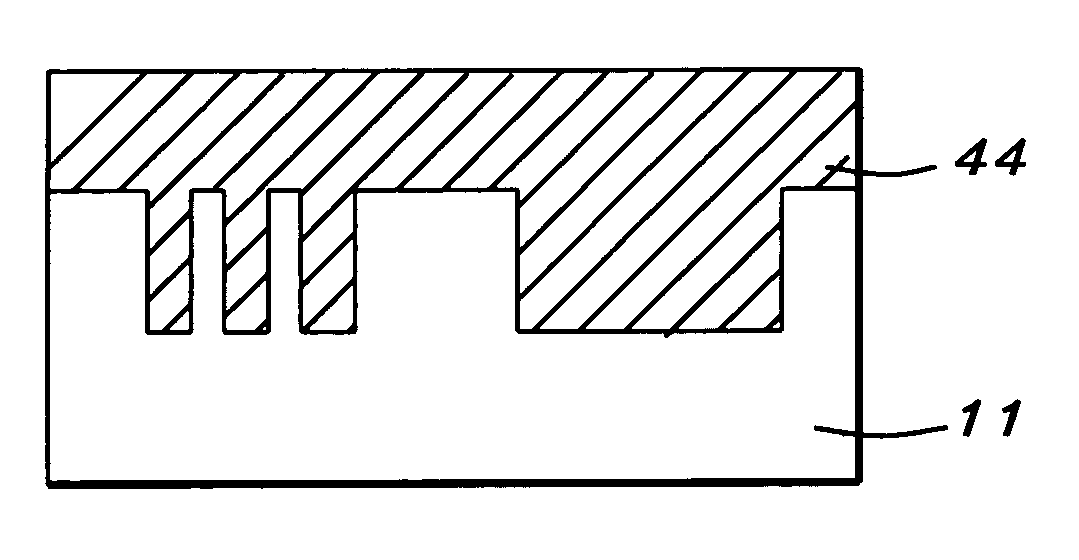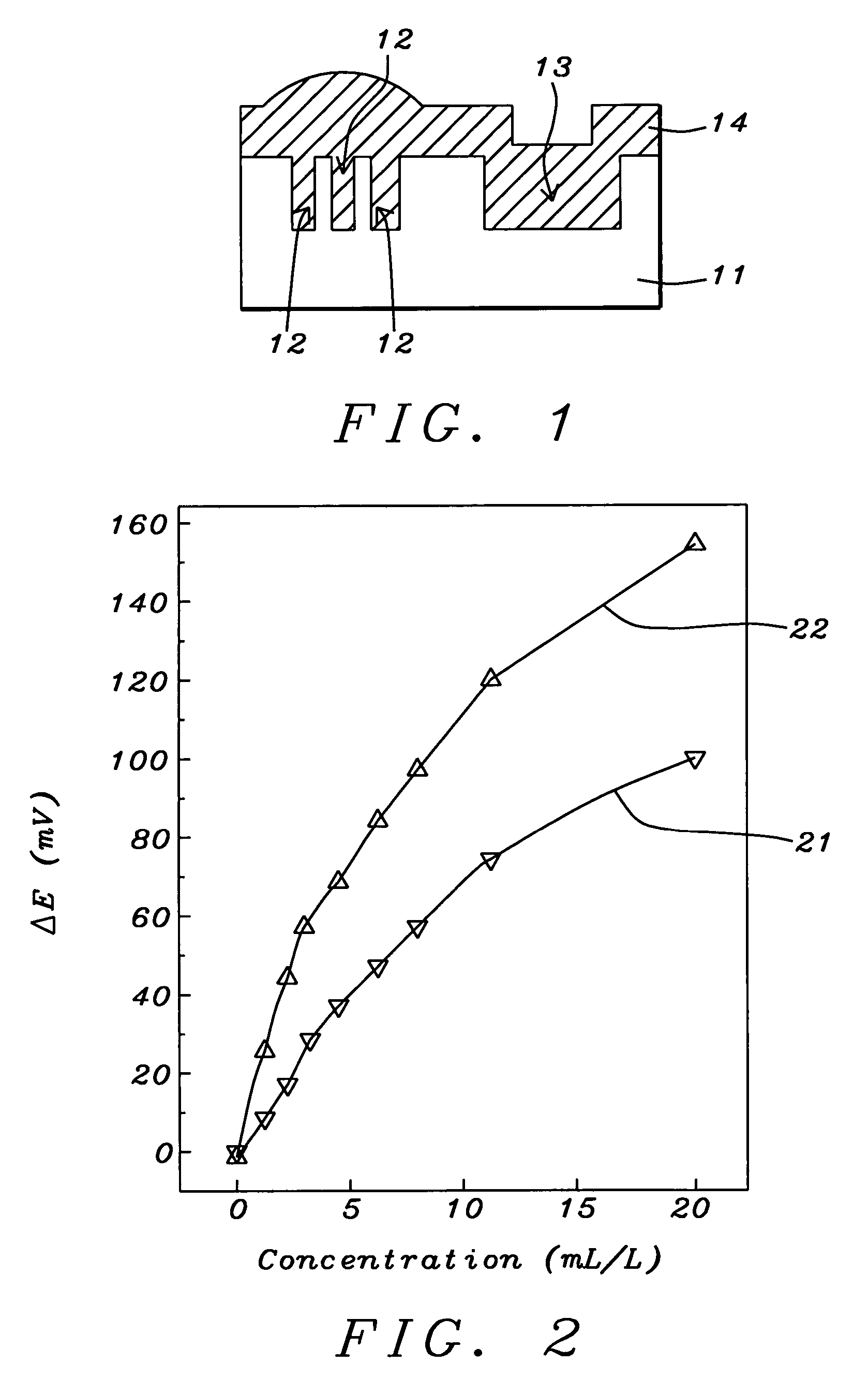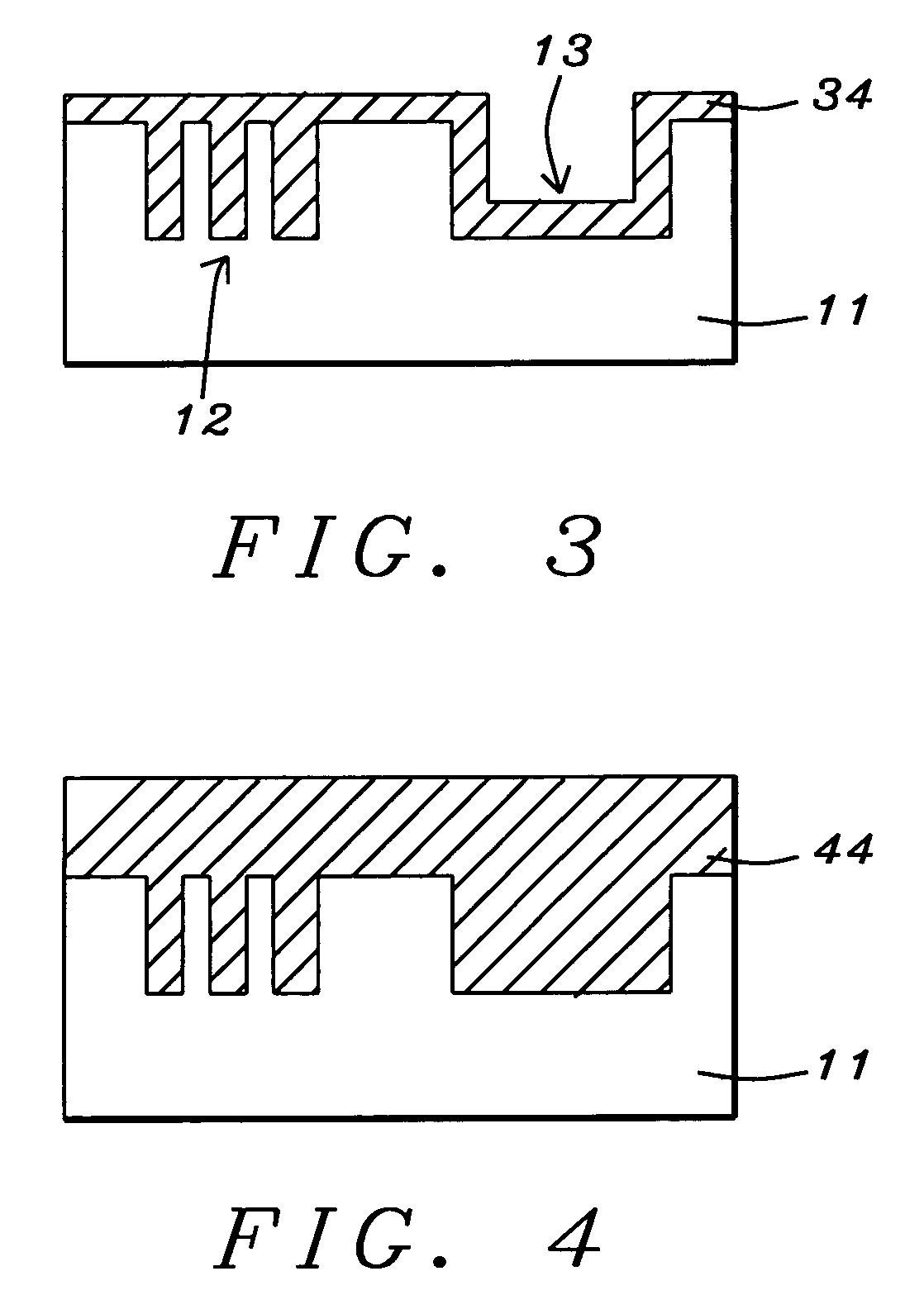Method to improve planarity of electroplated copper
a technology of electroplated copper and planarity, applied in the field of integrated circuits, can solve the problems of high localization of blocking effects at the surface, complicated technology involved, and problems of type schematically
- Summary
- Abstract
- Description
- Claims
- Application Information
AI Technical Summary
Benefits of technology
Problems solved by technology
Method used
Image
Examples
Embodiment Construction
[0020]Some examples of accelerators are 3-sulfopropyldisulfide, 41 sulfonated acetylthiourea, 3-mercapto-1-propanesulfonate (MPSA), and dibenzyl-dithio-carbamate.
[0021]The precise concentration of accelerator additive that is needed to produce a given deposition rate can vary from one additive to another. We illustrate this in FIG. 2 which compares the effects of two different chemicals when added to a plating bath as an accelerator. Curves 21 and 22 are plots of ‘potential difference needed to initiate plating’ (which equates with film growth rate) vs. additive concentration in parts per thousand. Thus, although both curves are similar in form, the chemical associated with curve 21 is less effective than the one associated with curve 22. Examples of the former include 3-sulfopropyldisulfide, while examples of the latter include 3-mercapto-1-propanesulfonate (MPSA).
[0022]The process of the present invention begins with the provision of silicon wafer 11 (as seen for example in FIG. 1...
PUM
| Property | Measurement | Unit |
|---|---|---|
| width | aaaaa | aaaaa |
| width | aaaaa | aaaaa |
| thickness | aaaaa | aaaaa |
Abstract
Description
Claims
Application Information
 Login to View More
Login to View More - R&D
- Intellectual Property
- Life Sciences
- Materials
- Tech Scout
- Unparalleled Data Quality
- Higher Quality Content
- 60% Fewer Hallucinations
Browse by: Latest US Patents, China's latest patents, Technical Efficacy Thesaurus, Application Domain, Technology Topic, Popular Technical Reports.
© 2025 PatSnap. All rights reserved.Legal|Privacy policy|Modern Slavery Act Transparency Statement|Sitemap|About US| Contact US: help@patsnap.com



